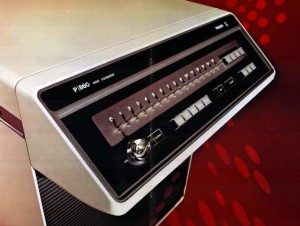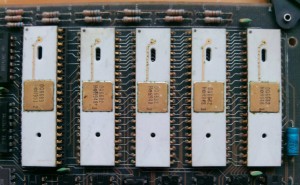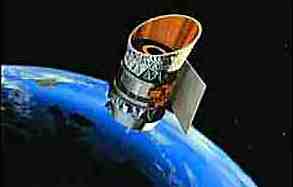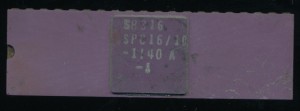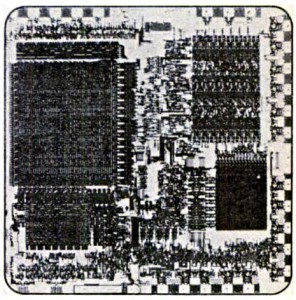Signetics SPC-16/10: Another Mini goes Micro
In the 1960’s the Dutch Philips Data Systems marketed computers from Honeywell. By 1970 they decided that simply reselling others machines was not the best value for them, or their customers and set off to design their own series of mini computers. The first design was the 8-bit P410, which only saw limited success, it was a bit too mini for the early 1970’s when 16-bits or better was the standard. 1970 saw Philips begin work on its successor in Fontenay Aux Roses, near Paris, France, a project known internally as Sagittaire. It was released in 1971 as the P800 series of mini computers, starting with the P850. These were a 16-bit design, using 16 16-bit registers. It shipped with 2k x 16bits of memory and had a cycle time of 3.2 microseconds (~312KHz). Further versions were released that supported up to 32k x 16bits of memory and faster cycle times.
The P800 architecture used the A0 register as the Program Counter and the last register (A15) as a stack pointer. The design supported up to 64 I/O devices and 64 interrupt levels. The addressing modes include direct, register, indirect, indexed and indexed indirect types and can operate on bits, bytes (characters), words, and double words. Since the stack is maintained in memory, the stack pointer can be rewritten, preserving the current stack for easier context switches. This is of course important as the P800 is designed as a multi-user. multi tasking computer. The P800 instruction set included 97 instructions, including MULT/DIV, though depending on the model, some of these were simulated (microcoded). The P800 family found wide use in offices and eventually banks (always the big money market) throughout Europe. It also proved to be useful in industrial environments, a somewhat underappreciated market for mini-computers at the time.
In 1979 Philips released the P851, a Single Board Computer (SBC), version of the P800 series. It included the full 32k words of memory and was an LSI implementation using 5 Philips LSI’s consisting of 4 4-bit ALUs and a control path. The P851 was used extensively for industrial automation as well as Philip’s own PM4400 computer system. This system became the basis of the PM4421 development system which supported development and emulation of many processors, including the Intel 8085/86/88, Zilog Z80, 650x, Motorola MC68k, Signetics 2650 and many others.
The P851 LSI design was also used in space missions, perhaps the most famous in the IRAS mission launched in 1983. This was the first full Infrared mapping mission launched, and in its 10 month mission, mapped almost the entire sky in 4 different IR wavelengths, IRAS Space Discoveries that are even today not yet identified. The mission was of course limited by the coolant carried to keep the IR detector cold, but the IRAS satellite continues to orbit Earth to this day, with a 16-bit P851 computer still on board.
Converting the P800 architecture to a bit slice based LSI design was a common way in the 1970’s to keep a minicomputer architecture relevant, most other companies did similar, but simply using ALUs was not enough, the end goal was always to move the entire minicomputer processor onto a single chip. DEC did this with the PDP/11, Data General with the Nova, TI with the TI/990 and Philips was not going to be left out.
In 1980 Philips announced a single chip version of the M851, the SPC-16/10. The Philips name was not well known for IC’s, but Signetics, a company Philips purchased in 1975, and whom had an extensive history in IC’s was. Thus the Philips single chip M851 was sold as the Signetics SPC-16/10. It was created on a NMOS process and ran at 3.125MHz (using a 25MHz clock divided by 8). It contained 17,000 transistors, most of which were used for the microcoding. Die size was 36 mm2 and it was packaged in a ceramic 40-pin DIP. It supported the entire P800 instruction set, interrupts, and I/O. Production continued until at least 1983 so it would appear to have enjoyed some success, though information is nearly non-existent today.
The SPC-16/10 was not mentioned in any Signetics literature I have seen, though a datasheet at least was made, very likely for the European market only. This makes finding information on such a chip very difficult, not to mention its name. The SPC-16 name, for those that are familiar with minicomputers, is not usually associated with Philips. In 1971 General Automation produced a 16-bit minicomputer called…The SPC-16. It was converted to LSI’s in the mid 1970’s (using chips by Synertek) and called the GA-16, which also found wide use in industrial automation. Their instruction sets are thankfully very different, but the naming of the Philips/Signetics chip is unfortunate, especially when researching such an obscure part. Philips Data Systems was purchased in 1992 by a long time competitor, DEC, thus sealing the end of the P800 architecture.


